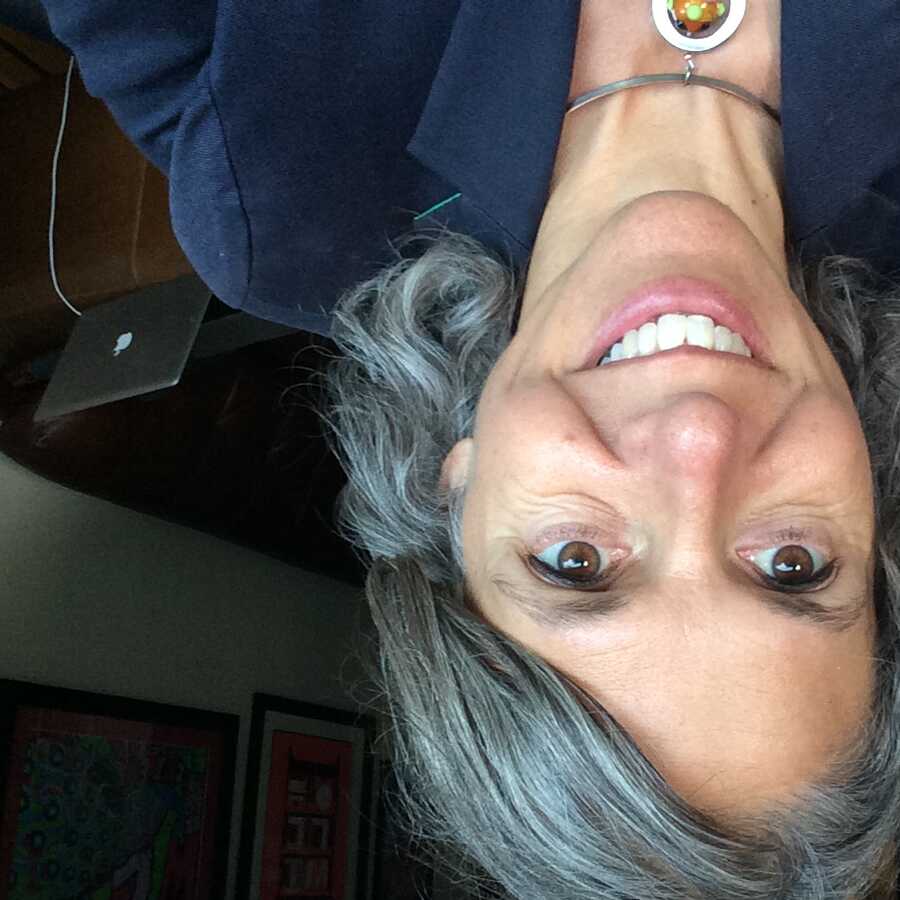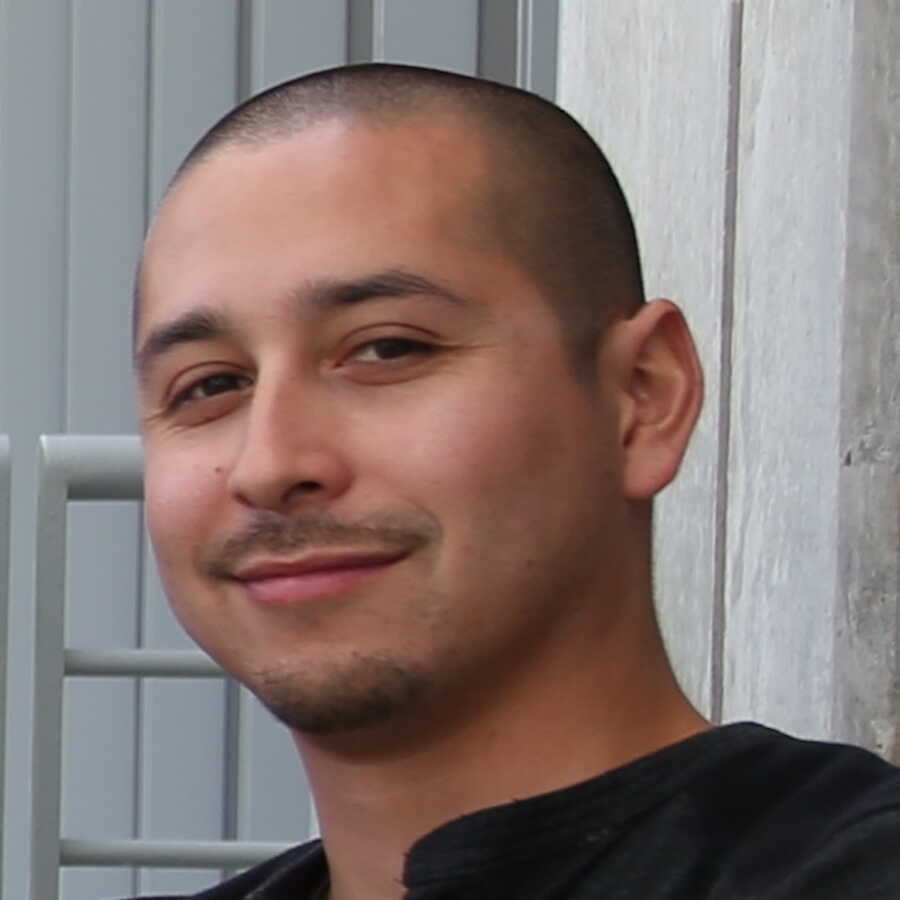Meet the staff of Morrison Planetarium and Visualization Studio (MPVS).
Visualization Studio

Ryan Wyatt assumed his role as Senior Director of Morrison Planetarium and Science Visualization at the California Academy of Sciences in April 2007. He has written and directed the Academy’s eight award-winning fulldome video planetarium programs, all of which are science documentaries that rely on visualization to tell their stories, but topics range from astronomy to geology, ecosystem science, and conservation.
Trained as an astronomer, Wyatt has worked in the planetarium field since 1991; prior to arriving in San Francisco, he worked for six years as Science Visualizer at the American Museum of Natural History in New York City. Wyatt is cofounder and vice president of Immersive Media Entertainment, Research, Science, and Art (IMERSA), a professional organization dedicated to advancing the art and technology of immersive digital experiences. He served as co-chair of the 2017 and 2019 Gordon Research Conferences on Visualization in Science and Education (GRC/VSE).

Mike is a visual effects artist who has worked at the Academy since 2008. He is fascinated with figuring out how to visualize natural world environments using computer graphics, to create cinematography that inspires people to spend more time exploring the outdoors.
Prior to his tenure at the Academy, he was cofounder of Giant Killer Robots, a San Francisco company that worked on over 20 feature films, including visual effects Oscar winners, What Dreams May Come and Happy Feet, Oscar-nominated Poseidon, and Emmy winner DreamKeeper.
He previously cofounded Pixel Liberation Front in New York City, one of the first companies in the world to specialize in feature film pre-visualization.
Mike holds a BA in Math and BS in Architecture Studies from the University of Utah and studied in the MArch program at MIT.

Molly Michelson is Senior Media Producer at the California Academy of Sciences. She has over two decades of production experience, including previous work for the Food Network and HGTV. In her role at the Academy, she has produced, written, and directed several hundred short videos, including those that feature our researchers, online educational videos, videos for various exhibits, the annual Big Bang Gala fundraising video, and more!

Cheryl Vanderbilt is the Senior Producer of Immersive Media at the California Academy of Sciences. She has been with the Academy since March 2010, and during that time has overseen projects ranging from fulldome films, science educational series, and media for exhibits. Before the Academy, Cheryl spent a decade working in local television production, and award-winning independent films.
During her roles on these projects, Cheryl managed production schedules, budgets, accounting, contracts, insurance, operations, distribution, marketing, travel, and purchasing. And she also utilized her artistic talents in editing, animation, compositing, and videography.
Cheryl served for four years on the Visual Effects Society Bay Area Board of Managers, leading as Chair in 2021. She loves cosplay, movies, board games, knitting, crocheting, sewing, and playing piano.

Jeroen Lapré is an Industrial Light & Magic veteran who worked on a range of films, including The Perfect Storm, the original Iron Man, and Star Wars I and II.
Jeroen led the research into, and adoption of, Houdini as a core tool for the Visualization Studio. On Expedition Reef, Jeroen worked on the powers-of-ten dive into a coral—showing the community of polyps at the microscopic level, the coral bleaching, and coral spawning sequences. He also used Houdini to create the aquarium rippling water surface, boat wake, and falling tetrapod simulations. Jeroen took the lead on the visual development of Living Worlds, and he developed an extended sequence in the show that takes audiences underneath the icy crust of Saturn’s moon Enceladus to view hypothetical thermal vents and to visit a proposed mission to explore the moon.
Jeroen is also producing his own digital film based on Arthur C. Clarke’s short story, “Maelstrom II.”

Matt Blackwell started out his career pursuing a doctorate in chemistry in the late 1990s. Following that, he took an unusual turn and worked in the visual effects industry, spending over a decade at Industrial Light & Magic. In the decade that he’s worked at the Academy, he’s drawn heavily on both of these experiences in order to present scientific data in fulldome shows.

Ken Ackerman is an animator and motion graphics designer. At the Academy, Ken has rigged and animated dozens of creatures including sea otters, birds, fish, skeletons, microscopic plankton and mammals of land and sea. He has also helped develop the look and feel of the motion graphics you see in the Academy's planetarium shows. He would love to chat with you about Houdini, animation, or just about anything else.

Jon Britton is Planetarium and Production Engineer for the Science Visualization Studio. He was hired in 2008 to work on opening Morrison Planetarium, creating interactive exhibits, and coding software that still lurks in every corner of the museum.
Prior to joining the Academy, Jon was a software developer, systems engineer, copywriter, and frequent office-dog-and-cat caregiver in nonprofit organizations and other disparate industries.

Nick Perez has over a decade of production experience with the Visualization Studio. He started at the California Academy of Sciences the summer before reopening in 2008 as a security guard, and worked on the public floor for six months before starting his yearlong internship down in the Visualization Studio. Once that was finished, Nick was offered a permanent position as the studio’s Video Editor & Videographer and has been down there ever since. He’s worked on Science Today, Academy Science Videos, Flipside Science, “Fund a Need” videos for the Academy gala, as well as videos for Khan Academy, exhibits, and many more projects.

Tippett Studio and ILM veteran (The Mummy, Star Wars II & III, War Of The Worlds, Harry Potter And The Chamber Of Secrets, Cosmos: A Spacetime Odyssey).
Physics and Electrical Engineering studies at Caltech and USC.
Over two college summers investigated the feasibility of exploring Mars using lighter-than-air balloons.
Developed the first photo-real computer graphic software for ocean waves.

As the Media Production Systems Administrator for the Visualization Studio, Dennis is responsible for maintaining the computer hardware and software, film equipment, and studio infrastructure for our in-house fulldome & editorial productions. He manages our data, archives, and supports our show distribution efforts.
He is adventurous, and will eat anything at least once! He enjoys golf, pickleball, period-piece, or actual event, type movies and shows.
Morrison Planetarium team

Dan manages the engineering side of Morrison Planetarium, Hohfeld Hall, and the immersive venues at the Academy of Sciences. Dan and his team maintain, repair, and upgrade the playback, display, and realtime presentation technology for these venues, as well as assisting with realtime content integration for the dome environment.
Since joining the Academy in 2012, Dan has had a hand in over one hundred live shows, lectures, events, and external collaborations at the Academy (including with the Kennedy Space Center) and has often helped acquire and understand data that would be used in Morrison Planetarium’s rendered productions.
Dan’s career as a planetarian started in 2003. In addition to his work at the Academy, Dan participated in planning the 2017 March for Science in San Francisco, which saw over 55,000 people gather in one of the largest pro-science demonstrations ever. Dan would then serve as President and Lead Organizer of March for Science - San Francisco into 2018. Dan currently serves as President for the Great Lakes Planetarium Association, the world’s oldest and largest professional organization of planetarium professionals, and has served on advisory committees for the International Planetarium Society.

Matthew Wrenne is the Planetarium and Production Support Engineer for the Experience Engineering (EE) department and is responsible for show control automation, immersive theater hardware repair, maintenance, and calibrations for Morrison Planetarium, Hohfeld Hall, and related venues. He has served as audio technology expert on all seven fulldome Morrison Planetarium shows.
In 2008 Matthew was hired as Audio Engineer for Morrison Planetarium during the production of Fragile Planet. He was responsible for integrating the audio editing software with the planetarium's surround sound system. Since then, Matthew has transitioned to the planetarium engineer role and has taken the lead in working with astronomy researchers on bringing their work into the dome with our monthly Dean Lecture series and utilizing earth science and non-astronomy content for real-time systems for the Academy Update series.
Before the California Academy of Sciences, Matthew worked in audio production for television, radio, and music. In 2012 he earned his master's degree in Audio Engineering and occasionally teaches audio courses at SAE Expression College.

Jacque Benitez (she/her) joined the planetarium team again as the Assistant Manager of Planetarium Programs in 2021 after 6 years as the Education Specialist for the Academy's Distance Learning program. She originally joined the Academy as a Planetarium Presenter in 2012. Jacque discovered her passion for astronomy as a young girl growing up in San Juan Capistrano, CA. She found her passion for informal education as a docent in the San Francisco State University's observatory, where she received her BA in Physics with a concentration in Astronomy. As the Assistant Manager, she is responsible for managing the presenter team and part of the live content creation team for Morrison Planetarium and other venues across the museum. In her free time, you will find Jacque swing dancing next to the de Young museum on Sunday afternoons or rooting for the San Francisco Giants.

Dylan Salas is a Planetarium and Production Support Engineer who works closely with the engineering team to maintain, upgrade and repair the AV systems in the Morrison Planetarium and other venues throughout the museum. Dylan also collaborates with the presenter team to develop and program live shows and lectures for these spaces.
Dylan earned his Bachelor’s degree in Astrophysics from UC Berkeley in 2020. Prior to the Academy, he worked at the Fleet Science Center in San Diego. In his free time, Dylan enjoys spending time with family, watching Star Trek, exploring the outdoors, and repairing mechanical calculators.


